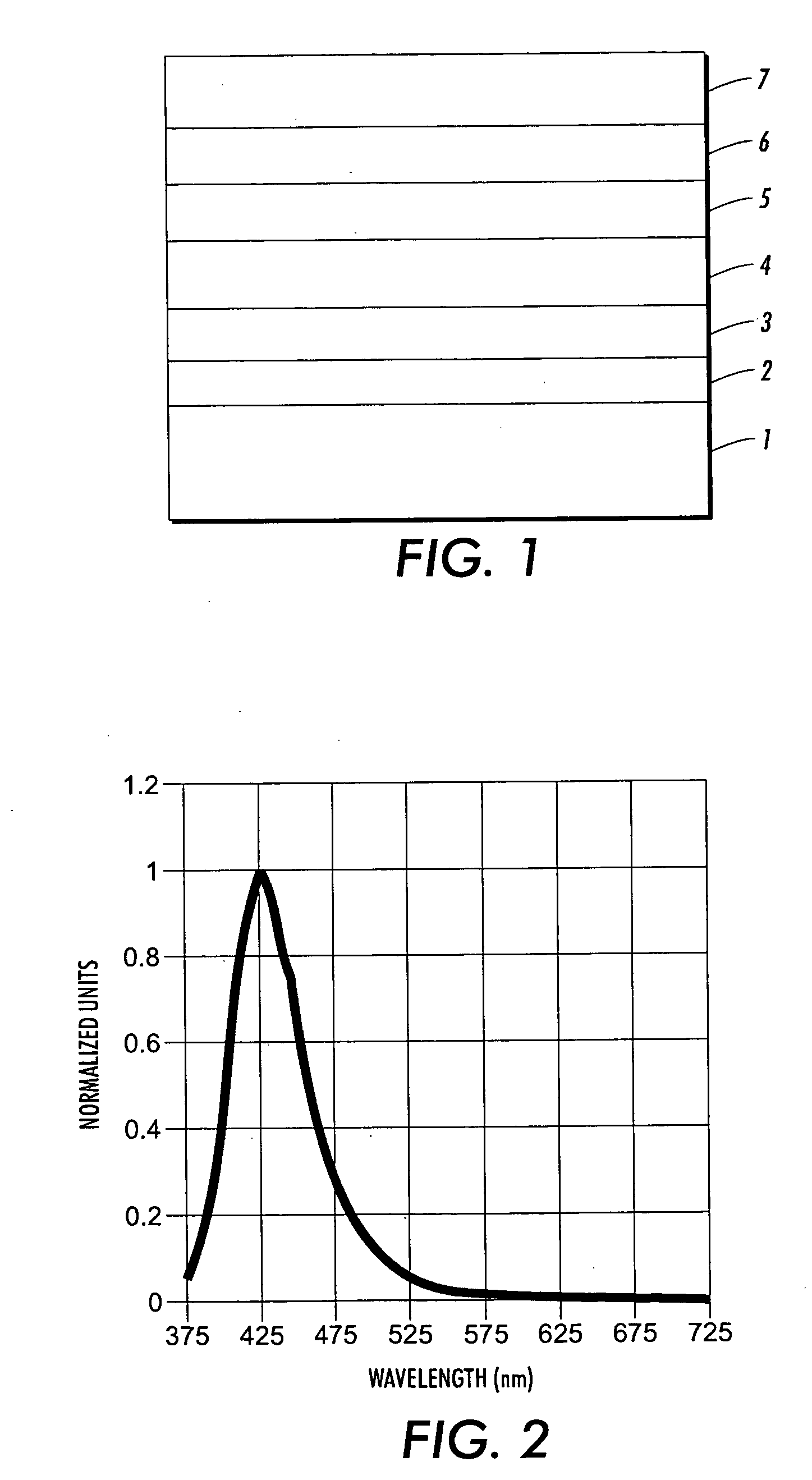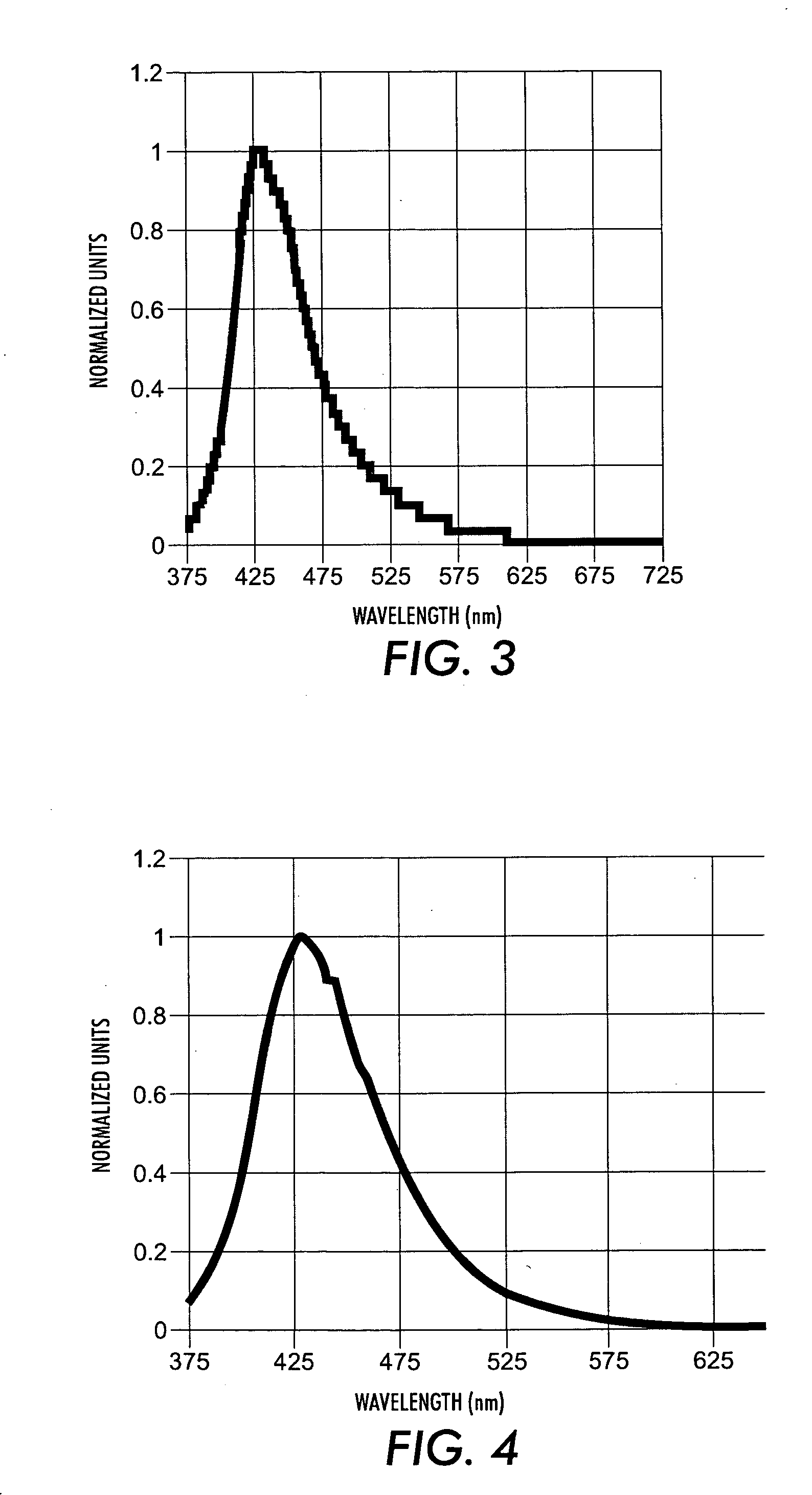Novel blue emitters for use in organic electroluminescence devices
- Summary
- Abstract
- Description
- Claims
- Application Information
AI Technical Summary
Benefits of technology
Problems solved by technology
Method used
Image
Examples
examples
[0065] More detailed description of examples of the disclosure will be given in the following examples, which are not intended to restrict the scope of the development.
example i
Synthesis of 4,4′-dibromo-1,1′-binaphthyl (Compound 9)
[0066] The compound, 1,1′-binaphthyl (10 g) was placed into a 1 L 3-necked flask equipped with a drying tube and addition funnel. The 1,1′-binaphthyl was dissolved in 600 mL of dichloromethane and was cooled to 0° C. on an ice bath. The bromine (4.25 mL) was placed into the addition funnel and diluted with 50 mL of dichloromethane. The bromine solution was added slowly to the reaction. The reaction was stirred for 3 hours and then a saturated aqueous solution of sodium thiosulfate (200 mL) was added which was stirred vigorously for 1 hour. The organic layer was removed and the aqueous layer was extracted with 2×200 mL of dichloromethane. The organic layers were collected, dried and the solvent removed under reduced pressure to give a brown powder which was treated with a 50 / 50 mixture of filtrol and alumina in toluene. The mixture was filtered and the solvent was removed under reduced pressure to give 15.3 g of a white powder. T...
example ii
Synthesis of 4,4′-[(4-t-butyl)diphenyl]-1,1′-binaphthyl (Compound 11)
[0067] The 4,4′-dibromo-1,1′-binaphthyl (5 g) and 4-t-butylphenyl boronic acid (3.3 g) were dissolved in toluene (75 mL) and ethanol (15 mL) under argon. A 2.0M aqueous potassium carbonate solution was added (22 mL) and the solution was purged with argon. The tetrakis(triphenylphosphine)palladium(0) (0.45 g) was added and the mixture was heated at reflux for 48 hours. After cooling, the layers were separated and the organic layer was extracted with 5% HCl and then several times with water. The organic layer was collected, dried and the solvent removed under reduced pressure to give a yellow powder. The solid was purified by sublimation to yield 4.78 g of the desired compound which has a melting point of 270° C. The structure of this compound was confirmed by proton NMR.
PUM
| Property | Measurement | Unit |
|---|---|---|
| Thickness | aaaaa | aaaaa |
| Thickness | aaaaa | aaaaa |
| Thickness | aaaaa | aaaaa |
Abstract
Description
Claims
Application Information
 Login to View More
Login to View More - R&D
- Intellectual Property
- Life Sciences
- Materials
- Tech Scout
- Unparalleled Data Quality
- Higher Quality Content
- 60% Fewer Hallucinations
Browse by: Latest US Patents, China's latest patents, Technical Efficacy Thesaurus, Application Domain, Technology Topic, Popular Technical Reports.
© 2025 PatSnap. All rights reserved.Legal|Privacy policy|Modern Slavery Act Transparency Statement|Sitemap|About US| Contact US: help@patsnap.com



